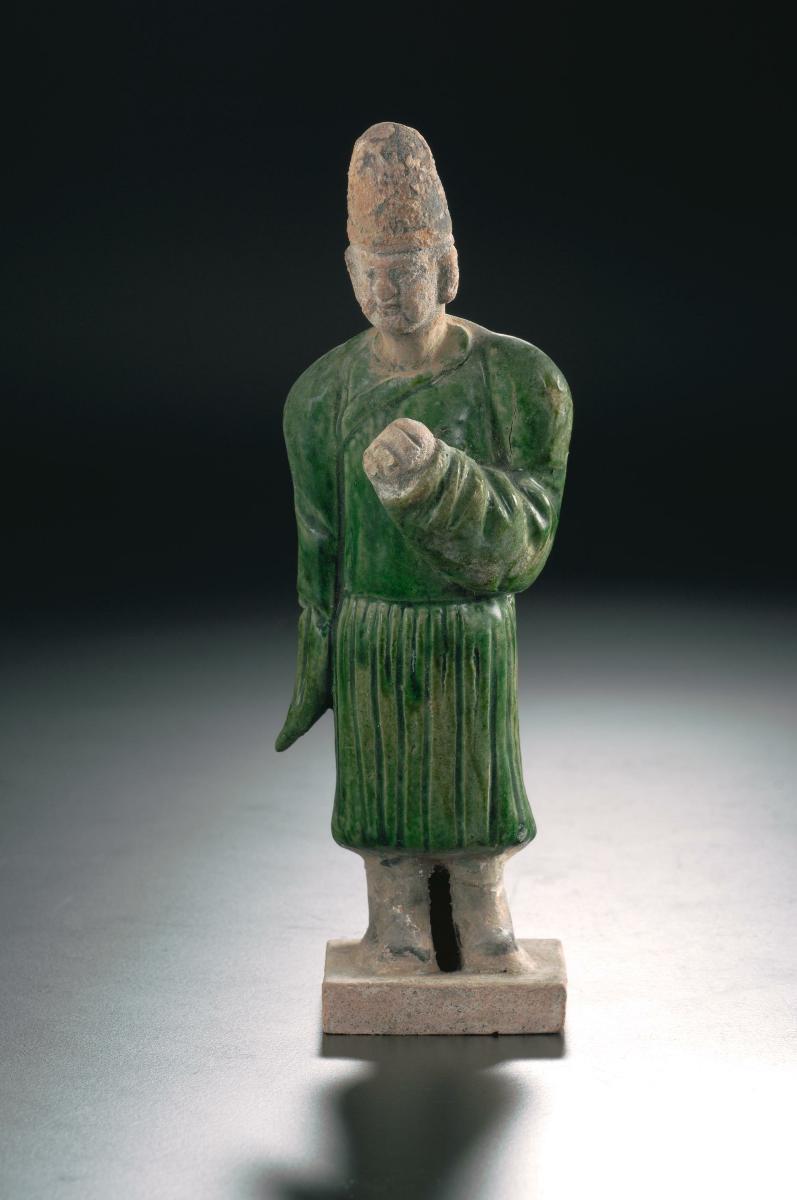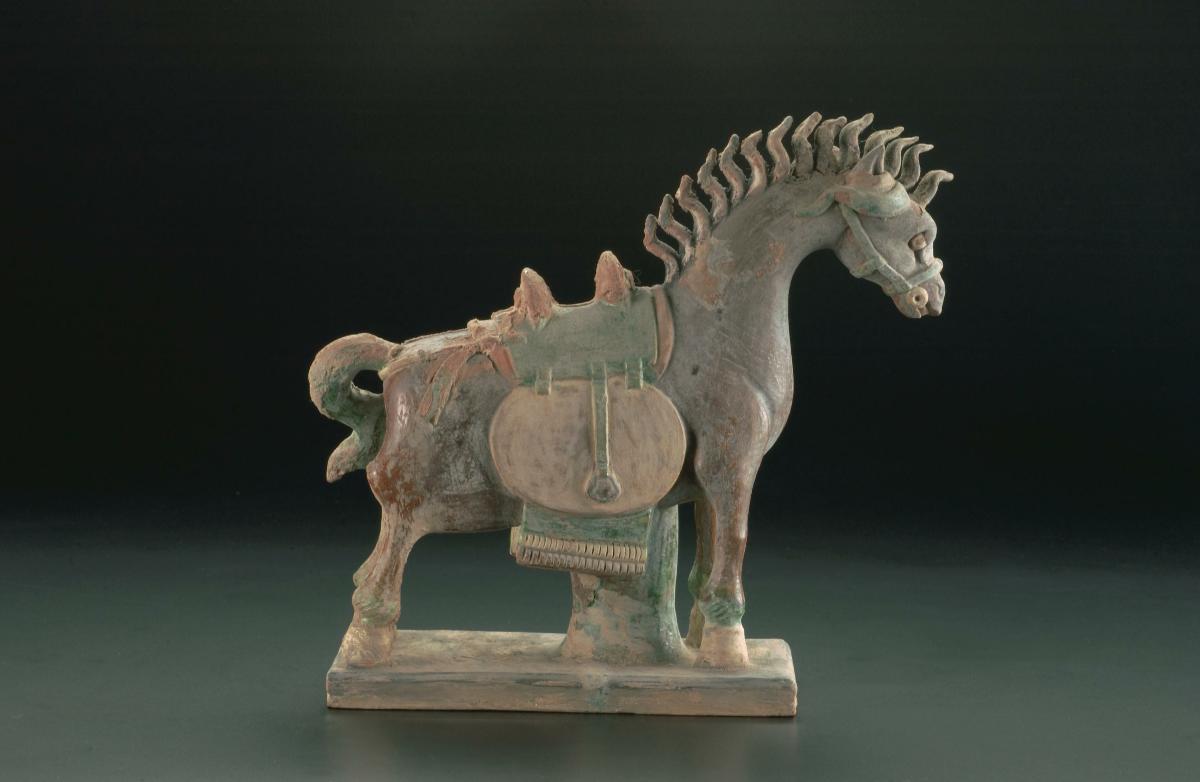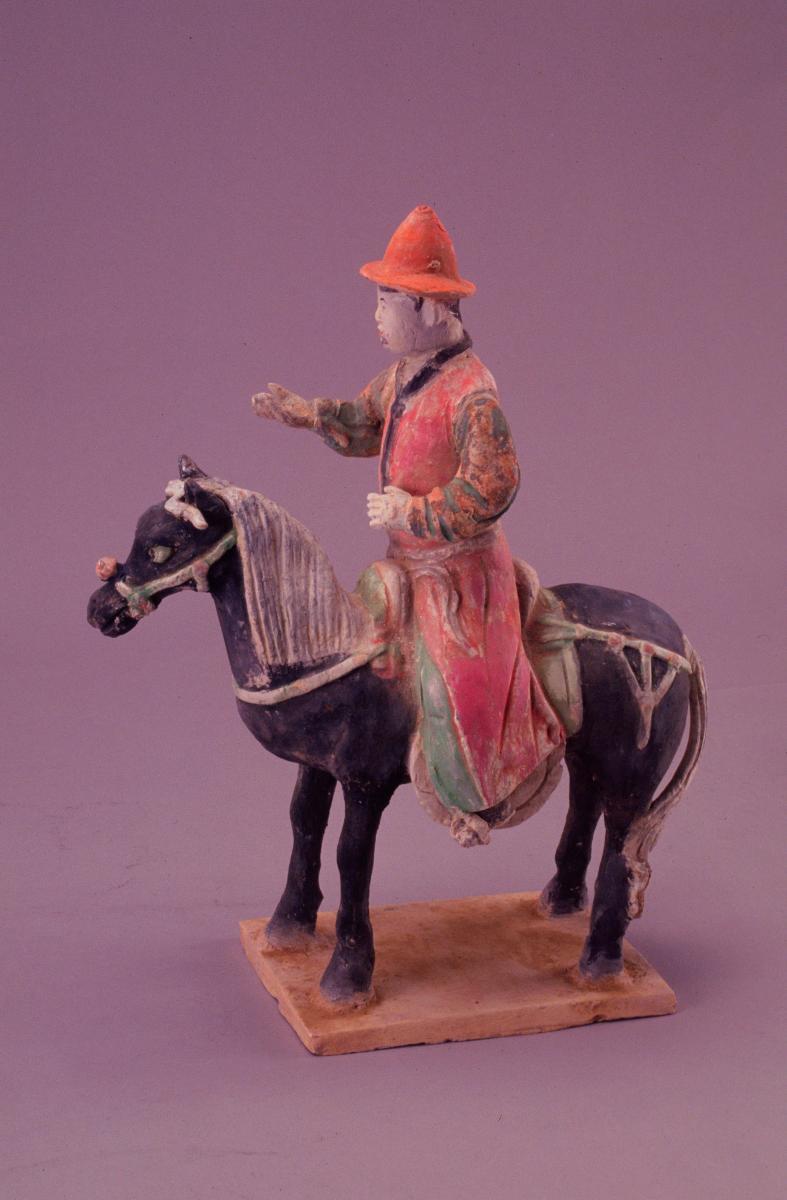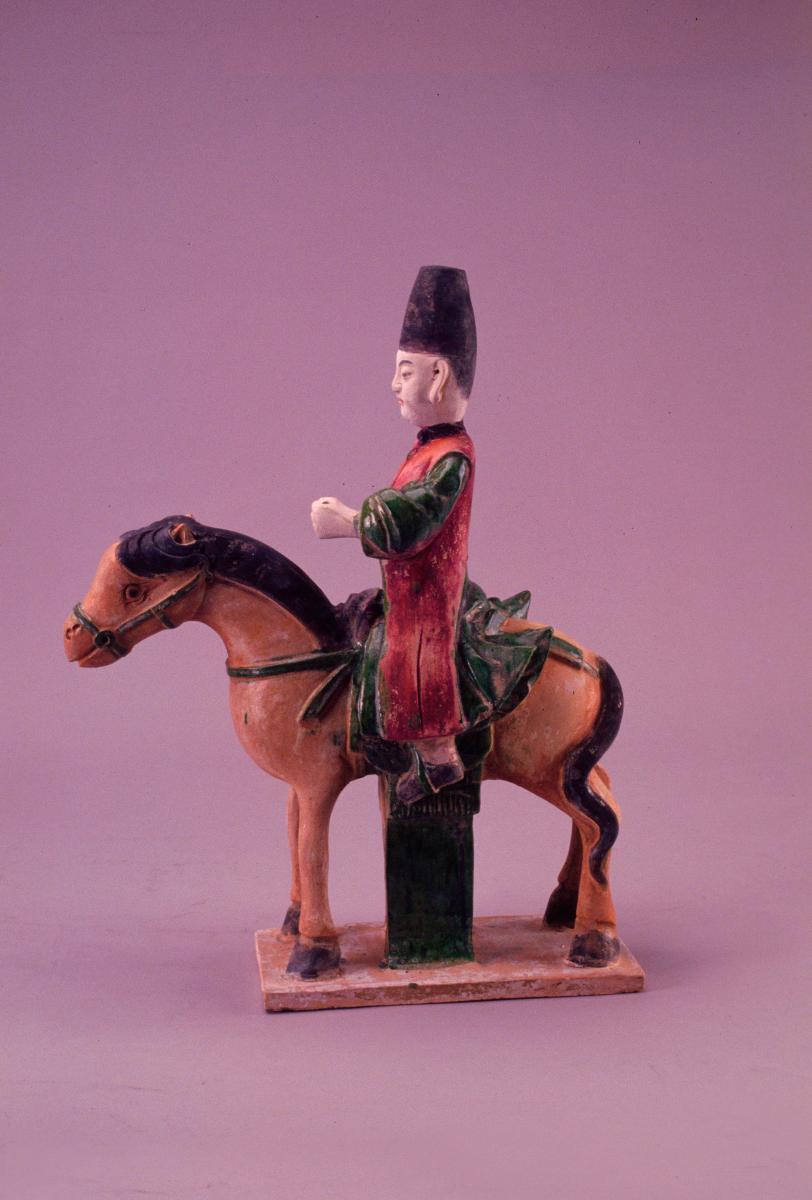This figure of a groom would have been part of a large group of pottery tomb figures. He wears a tall hat and a broad-sleeved robe decorated with vermillion pigment and green glaze.The practice of using lead-glazed burial wares started during the Han dynasty (206 BCE-220 CE). This glaze technology further developed during the Tang dynasty (618-906) into ‘sancai’ (‘three-colour’) glaze. This included colours such as cream, amber, brown and blue, a style that continued into the Ming period. The custom of making ‘mingqi’ or burial wares was an ancient practice. It was believed that these were necessary for the deceased in the next world. Large groups of burial wares were a display of wealth and social status.















